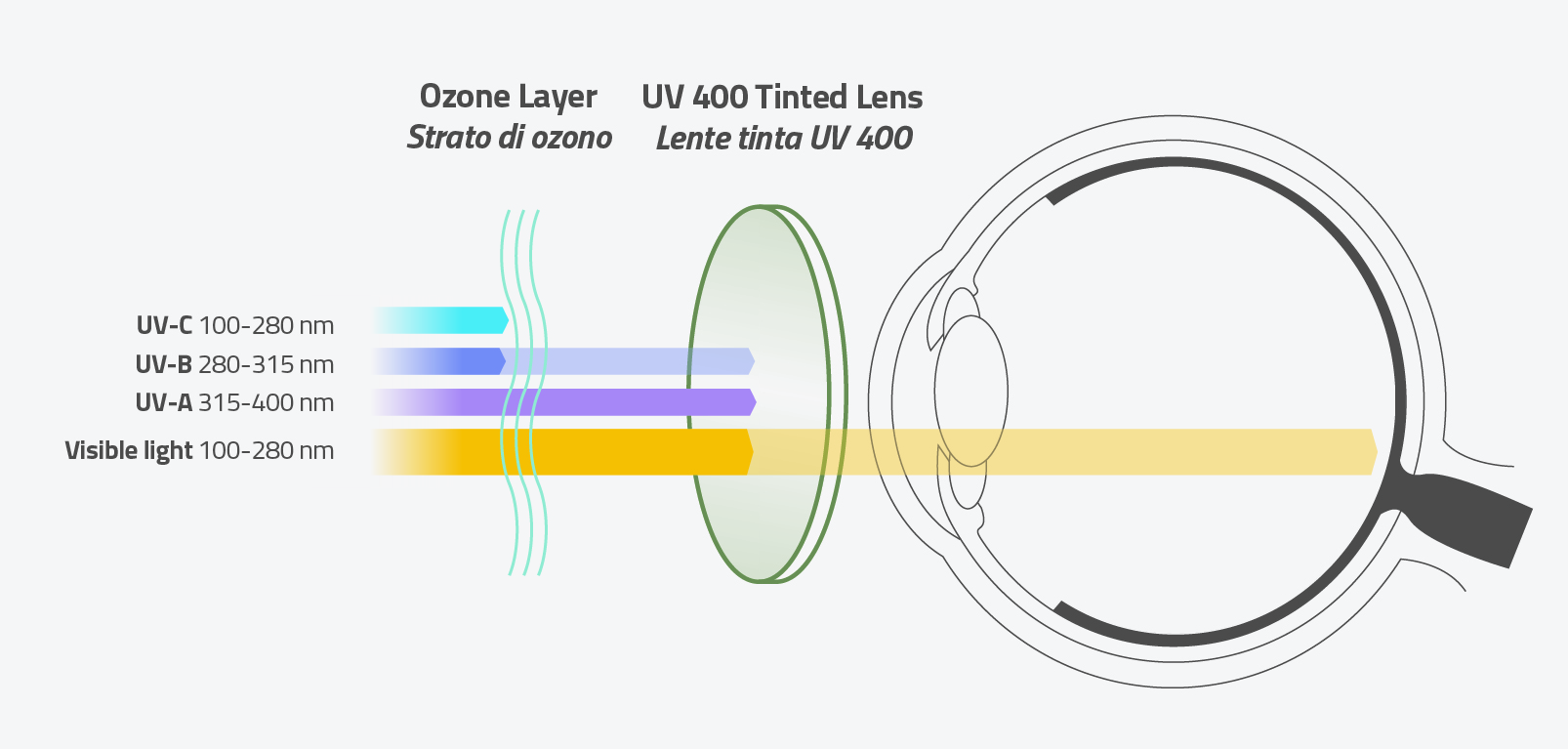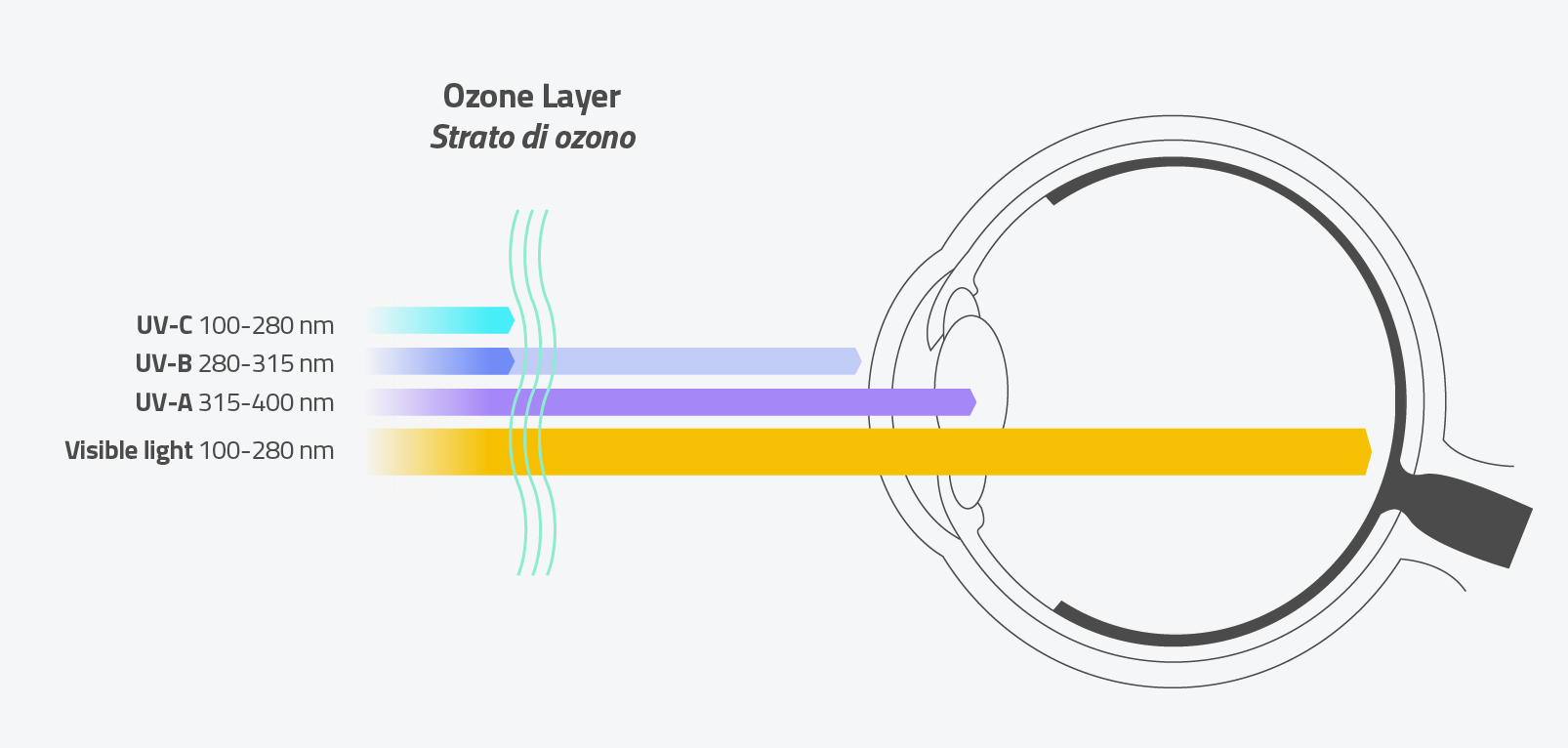Tinted lenses, or coloured lenses, are transparent lenses that undergo a colouration process.
The colouration process mainly involves immersing the lens in a colour bath, the composition of which depends on the lens material. Protecting our eyes from the sun while also being stylish, tinted lenses are a fashion accessory, of course, but they can also help to improve our vision.
Mineral lenses are tinted by means of absorbent layers that are vaporised. These thin layers are made of metal composites that can only be vaporised at high temperatures, in consecutive stages to retain the required properties of the glass. For this reason, mineral lenses are available in the tones created by the different degrees of absorption.
Organic lenses are coloured by immersion in colouring solutions. Consequently, these lenses can be tinted in virtually any colour.
Chromatics
There are many possible colour combinations: from timeless classics such as grey, green, brown and blue, to the latest pastel trends such as yellow and pink. Colour distribution can also be varied to achieve uniform or sfumato coverage, in monochrome or in colour combinations for novel effects. So today there really are a huge number of possible colours, and the colour choice is often for purely aesthetic reasons.
The current trend is for unusual colours and pastel tones, but, besides creating an enviable look, they can also improve our vision. In fact, each colour has a specific effect on our vision. Pink, for example, helps to improve depth of vision and is restful on the eyes. While darker shades, such as dark green, black, grey and blue, have always been used for sunglasses as they significantly reduce glare, giving definition and contrast even in very bright conditions. Depending on your requirements, it is important to choose a degree of colouration that meets your needs, but that does not affect your quality of vision.
Each colour thus has a specific “power”, an intrinsic characteristic that affects our vision.
These are some of the main colours.
Learn about their “powers”.
Protection
It is important however to emphasise one thing: tinted lenses are able to absorb light intensity, reducing its passage into the eye. But UV rays are not visible light, and so tinted lenses do not always provide UV protection. In very bright conditions, our pupils contract to ensure only the required light rays enter the eye.
When a coloured lens is placed in front of our eyes, the lens acts as a filter and absorbs part of the light; this improves our vision due to an increase in contrast, but also means we are no longer experiencing very bright conditions, and so the pupil dilates, allowing UV rays to enter deep into the eye. That’s why a UV filter is extremely important for tinted lenses, even more so than for transparent lenses.
Does the use of a UV filter
change the colour of the lens?
The answer is simple: no!
In fact, some lenses treated with a UV filter are completely transparent.
The level of protection against ultraviolet rays is normally indicated by the letters UV, followed by the intensity (in nanometres) of the maximum wavelength of light blocked.
It’s important to remember that the wavelength of UVB rays is 280-315 nm, while that of UVA is 315-400 nm, and so, to ensure adequate protection, it’s always best to use a total protection filter (UV400, for example).


Choose your tinted lens.
To give you the right look,
visual comfort and adequate protection.

 Follow updates on LinkedIn
Follow updates on LinkedIn